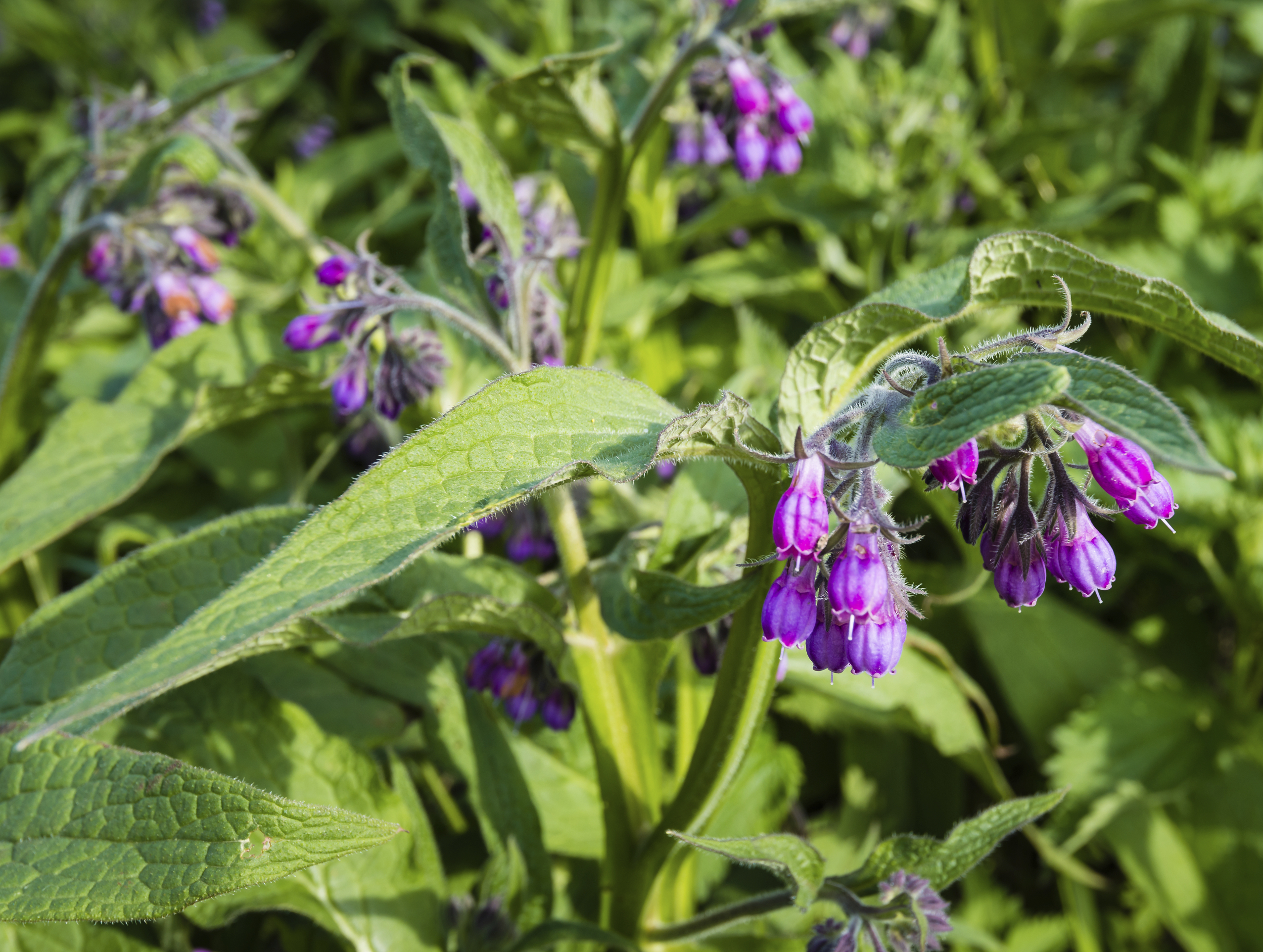It is curious how you can suddenly stumble upon an abundance of one species of wild flower in a particular location. Maybe it is a strange question to ask, but why grow there and not in a similar area of ground nearby?
A whole range of environmental factors will no doubt be at work, including soil chemistry, competition from other plants and sunlight, but I suspect chance is often the dominant factor in determining the places where our native flora ends up growing.
Such reflection came upon me when I found a profusion of comfrey flourishing in an open area of ground near my home. They are attractive bushy plants with drooping purple or creamy flowers, depending upon the strain. As I examined them, I also pondered that if I had come across these plants in medieval times, I would almost certainly have kept a mental note of their location because comfrey is well known for its medicinal properties.
Comfrey is said to make an effective poultice for treating wounds and bruises, with the roots containing a substance called allantoin, which promotes healing in body tissues. Indeed, an old folk-name for the plant is ‘knitbone’ because of its repute in helping mend fractures and broken limbs.
But comfrey is just the tip of the iceberg as far as herbal treatments are concerned, for our forebears used a vast array of other native flora as a natural medicine chest to combat disease and infection.
The clue often lies within the name of the plant, for example woundwort, selfheal and feverfew. In some instances the remedies used by ancient herbalists were more down to eternal hope than effective cure, but in others these treatments were effective due to the unique biochemistry of individual plant species.
Meadowsweet is a good illustration of this link between the treatments used by our ancestors and the medicines of today. An infusion from this common but beautiful plant was used in olden times to ease pain and calm fevers, with the leaves and flowers containing the same group of chemicals as found in aspirin. The name aspirin is derived from spiraea, the old botanical term for meadowsweet.
These medicinal plants are all around us and in the past people would have enjoyed an incredibly close affinity with their natural environment and be highly skilled at plant identification and their uses.
There is also an important underlying lesson here. With fragile habitats being destroyed all over the world, there is the continuing threat of valuable plant species with properties so far undiscovered being lost for good – whether it be for medicine or developing disease resistant crops for agriculture.
As a wild flower enthusiast, I find there is real satisfaction to be gained from being aware of the cultural significance of so many of our commonly found plants, which in itself instils a sense of awe about the knowledge of the natural world that our ancestors held in so much abundance.
Info
As well as its reputed medicinal properties, comfrey also makes a great natural fertiliser, with its leaves being able to compost down quickly and being a good source of nitrogen and other nutrients.










